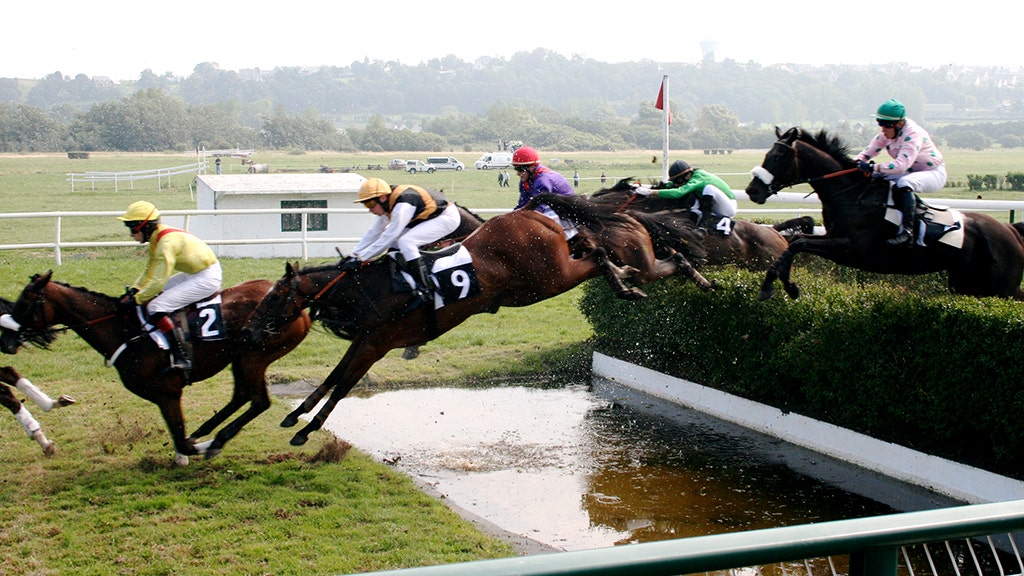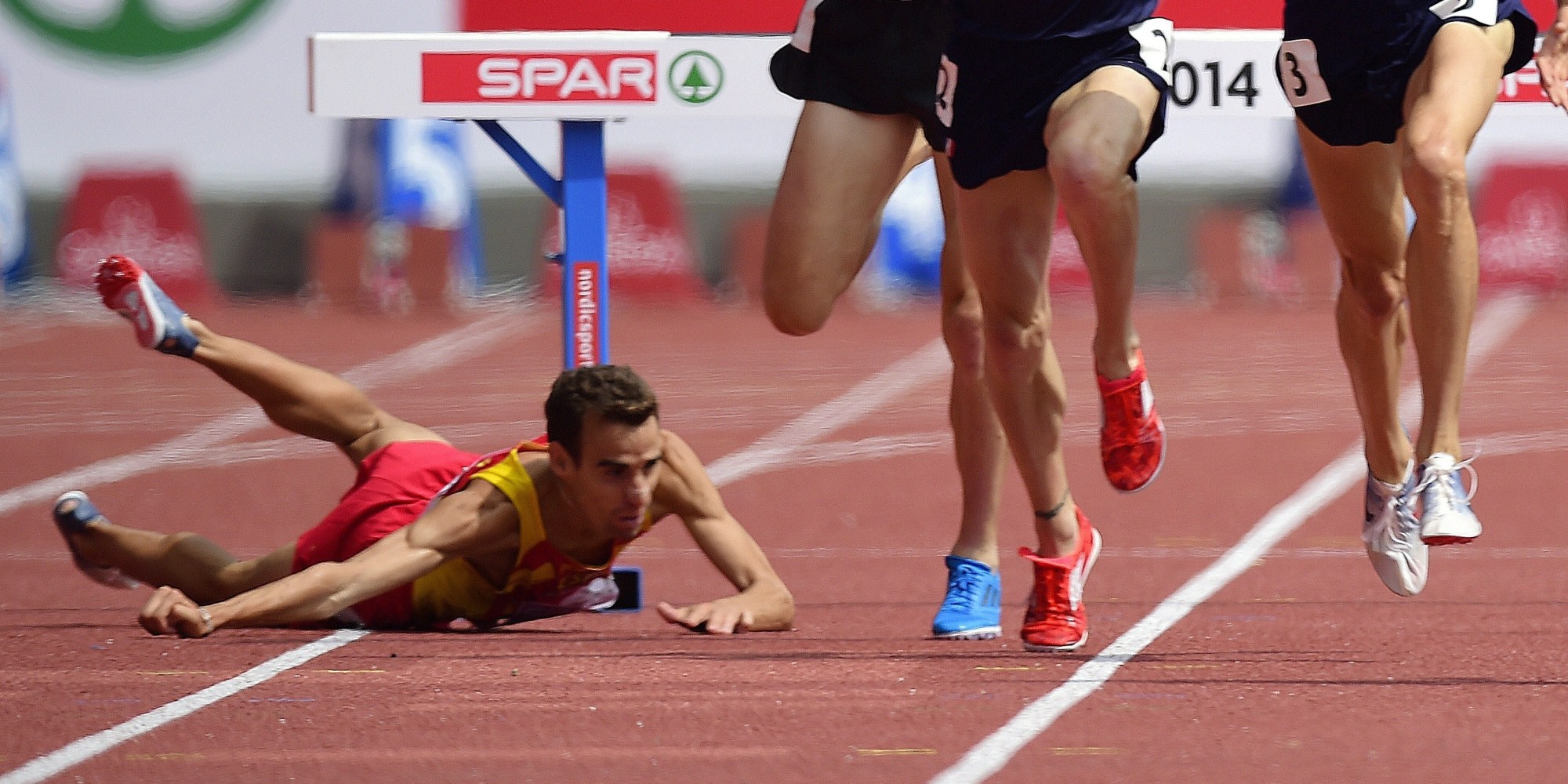The Mechanics of a Steeplechase Fall

Steeplechase racing, with its combination of speed, endurance, and challenging obstacles, is a thrilling sport that often showcases breathtaking moments of athleticism. However, the inherent risks associated with navigating fences and water jumps can also lead to falls, which can have serious consequences for both horse and rider. Understanding the mechanics of a steeplechase fall is crucial for appreciating the sport’s inherent dangers and recognizing the factors that contribute to these incidents.
Common Causes of Falls
Falls in steeplechase racing can be attributed to a complex interplay of factors related to the horse, rider, and course obstacles.
- Horse Factors:
- Lack of experience or training: Young or inexperienced horses may not be adequately prepared to handle the demands of steeplechase racing, particularly the obstacles.
- Physical limitations: Certain physical characteristics, such as leg conformation or temperament, can make a horse more prone to stumbling or falling.
- Fatigue: As the race progresses, horses may become fatigued, leading to reduced coordination and increased risk of falls.
- Injury: An existing injury, such as a leg strain or tendonitis, can significantly increase the likelihood of a fall.
- Rider Factors:
- Riding skills: A rider’s ability to control the horse over obstacles and maintain balance is crucial for preventing falls.
- Experience: Experienced riders are more adept at anticipating potential hazards and adjusting their riding style accordingly.
- Concentration and focus: A lapse in concentration or focus can lead to mistakes that result in falls.
- Communication with the horse: Effective communication between rider and horse is essential for navigating obstacles safely and smoothly.
- Course Obstacles:
- Obstacle design: The design of the obstacles, including the height, width, and landing surface, can influence the likelihood of a fall.
- Course conditions: The condition of the course, such as the terrain, weather, and presence of obstacles, can impact the stability and footing of the horses.
- Water jumps: Water jumps pose a unique challenge, as horses must navigate a slippery surface and potentially encounter rough water conditions.
Biomechanics of a Fall
The biomechanics of a steeplechase fall involve a complex interplay of forces that can result in significant injuries to both horse and rider.
- Forces Involved:
- Impact forces: When a horse falls, it experiences significant impact forces as its body collides with the ground.
- Rotational forces: Falls can also generate rotational forces, which can cause injuries to ligaments, tendons, and bones.
- Shear forces: Shear forces, which act parallel to a surface, can occur during falls and lead to injuries to the horse’s legs and feet.
- Potential Injuries:
- Horse Injuries:
- Leg fractures: Falls can result in fractures to the horse’s legs, particularly the cannon bones, fetlock joints, and pastern bones.
- Ligament and tendon injuries: Ligament and tendon injuries, such as sprains and tears, are common in falls.
- Soft tissue injuries: Bruising, muscle strains, and lacerations are also possible injuries.
- Rider Injuries:
- Head injuries: Falls can result in concussions, skull fractures, and other head injuries.
- Spinal injuries: Spinal cord injuries are a serious risk, particularly if the rider lands directly on their back or neck.
- Fractures: Fractures to the arms, legs, and ribs are also possible.
- Soft tissue injuries: Sprains, strains, and lacerations are common rider injuries.
- Horse Injuries:
- Trips: Trips occur when a horse catches its foot on the ground, causing it to lose its balance and fall.
- Stumbles: Stumbles are similar to trips, but the horse’s foot may not actually catch on anything. Instead, the horse may simply lose its footing and stumble.
- Falls over obstacles: Falls over obstacles can occur when a horse misjudges the jump, fails to clear the obstacle, or loses its balance while landing.
- The Fall of Red Rum: In 1974, the legendary steeplechase horse Red Rum, a three-time Grand National winner, suffered a fatal fall during a race. This tragic incident shocked the racing world and underscored the risks associated with steeplechase racing. Red Rum’s legacy, however, remains strong, and his fall serves as a poignant reminder of the dangers of the sport.
- The Fall of Frank ‘The Tank’ Fletcher: In 2008, during the Grand National, jockey Frank ‘The Tank’ Fletcher suffered a horrific fall, breaking his neck. This incident led to a renewed focus on rider safety and resulted in the implementation of new safety regulations and equipment, such as mandatory helmet use.
- Helmet Use: Mandatory helmet use for riders is a direct result of the increasing awareness of head injuries sustained in falls. The introduction of helmets has significantly reduced the severity of head injuries, contributing to a safer racing environment.
- Course Design: Steeplechase courses have evolved to incorporate safety features like improved fencing, wider jumps, and more forgiving landing areas. These modifications aim to reduce the severity of falls and provide a safer environment for both horses and riders.
- Horse Safety: The focus on horse safety has led to stricter veterinary inspections, improved training methods, and more stringent rules regarding the health and well-being of horses participating in steeplechase races. These measures aim to reduce the likelihood of falls due to horse-related factors.
- Increased Public Awareness: High-profile falls have often brought increased public attention to the dangers of steeplechase racing, leading to discussions about safety and the ethics of the sport.
- Technological Advancements: The need to improve safety has spurred advancements in racing technology, including the development of new safety equipment and improved course design techniques.
- Evolution of the Sport: Steeplechase falls have influenced the evolution of the sport, leading to changes in racing rules, course design, and the types of horses used in races.
Types of Falls, Steeplechase fall
Steeplechase falls can occur in a variety of ways, depending on the factors involved.
The Role of Steeplechase Falls in Racing History

Steeplechase falls, while a dangerous aspect of the sport, have played a significant role in shaping its history, safety regulations, and perception. These falls have not only impacted riders and horses but have also influenced the evolution of the sport itself.
Notable Steeplechase Falls and Their Impact
Notable steeplechase falls throughout history have highlighted the inherent risks of the sport and prompted changes to improve safety. These falls have also etched themselves into the memories of fans and riders alike, becoming legendary tales passed down through generations.
Evolution of Safety Regulations and Equipment
Steeplechase falls have been a driving force behind the evolution of safety regulations and equipment in the sport. These changes aim to mitigate the risks associated with falls and protect both riders and horses.
Steeplechase Falls and the Development of the Sport
Steeplechase falls have shaped the development of the sport in various ways. These falls have led to changes in racing practices, course design, and public perception of the sport.
It’s a brutal sight, a steeplechase fall. One moment they’re soaring over the barrier, the next they’re sprawled on the track, the momentum of their run abruptly halted. And it’s not just a stumble, it’s a full-body crash, a reminder of the inherent danger in this grueling race.
But what makes these falls even more dramatic are the steeplechase Olympics fall , where the stakes are higher, the competition fiercer, and the pressure immense. And yet, even with the potential for serious injury, the allure of the steeplechase remains strong, drawing athletes to push their limits and embrace the thrill of the race, even if it means a painful fall.
The image of a steeplechase fall is etched in our minds – a blur of legs and a sickening thud. It’s a reminder of the inherent risk in this grueling race. But amidst the danger, the Ethiopian steeplechase has emerged as a powerhouse, dominating the sport with their incredible endurance and tactical prowess.
Ethiopian steeplechase dominance is a testament to their dedication and natural talent. Even with the ever-present risk of a fall, the allure of the steeplechase, with its unique challenges and thrilling finish, continues to draw athletes from around the world.